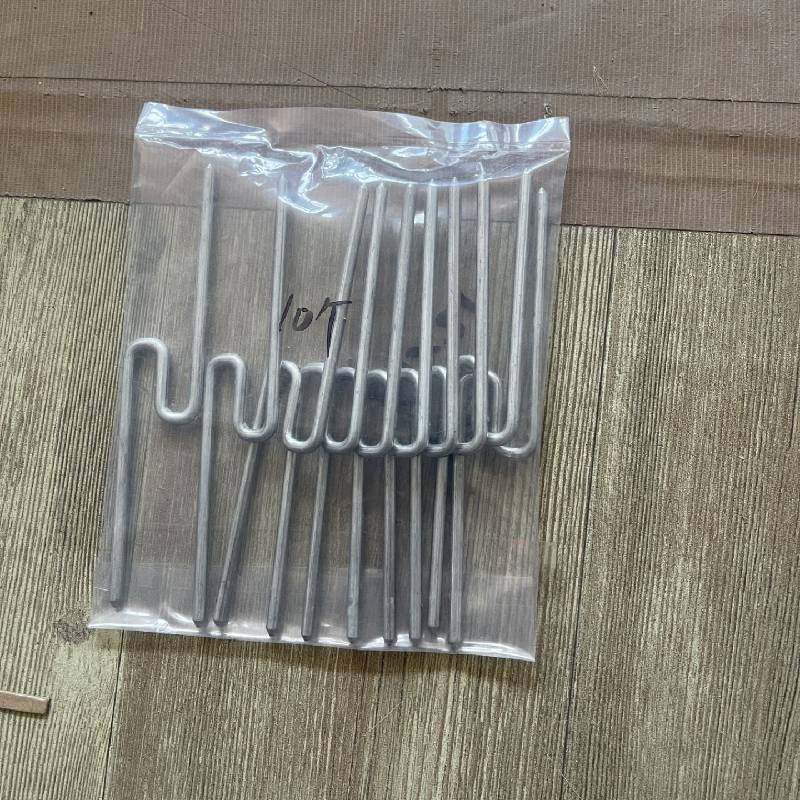
- Mobile Phone
- +8613931874955
- sales@cntcmetal.com
50mm compression spring
Understanding 50mm Compression Springs Applications, Design, and Benefits
Compression springs are essential components in various mechanical systems, providing the necessary force and energy storage to absorb shock, maintain pressure, and support weight. Among the different types available, the 50mm compression spring stands out for its versatile applications across numerous industries. In this article, we will explore the characteristics, design considerations, applications, and benefits of 50mm compression springs.
Characteristics of 50mm Compression Springs
A 50mm compression spring is characterized by its diameter of 50mm and is typically designed to compress under load. The specifications of these springs can vary significantly, including wire diameter, coil count, free length, and material. Common materials used in the manufacture of compression springs include stainless steel, music wire, and oil-tempered steel. Each material offers different levels of strength, durability, and resistance to corrosion, making it crucial to select the appropriate material based on the intended application.
Design Considerations
When designing or selecting a 50mm compression spring, engineers need to consider several critical factors
1. Load Requirements Understanding the maximum load the spring must support is paramount. The spring's rate, which indicates the stiffness, is calculated based on the load and deflection required.
2. Space Constraints The available space for the spring installation can dictate whether a 50mm compression spring will fit adequately and perform as intended.
3. Environment The operational environment plays a significant role in determining the material of the spring. For example, springs used in corrosive environments may require coatings or materials that resist rust and degradation.
4. Coil Design The number of active coils affects the spring's performance. More coils can lead to a reduced spring rate, while fewer coils can increase the rate but may result in a less flexible spring.
5. Fatigue Life It's essential to consider the spring's fatigue life, particularly if the application involves repeated loading and unloading cycles. Proper design and material selection can enhance longevity.
Applications of 50mm Compression Springs
50mm compression springs have a wide range of applications across different industries
50mm compression spring

- Automotive In vehicle suspension systems, 50mm compression springs are crucial for absorbing shocks and providing a smooth ride
. They are also used in clutch and brake systems.- Industrial Machinery These springs are integral in various machinery, helping to maintain tension, absorb shocks, and provide support in assembly lines and production equipment.
- Consumer Products From pens to appliances, 50mm compression springs are prevalent in everyday items, providing functionality and enhancing user experience.
- Electronics They are found in devices such as keyboards and remote controls, where their ability to return to a specific position is essential for effective operation.
Benefits of 50mm Compression Springs
The utilization of 50mm compression springs offers numerous advantages
1. Energy Storage They store mechanical energy, allowing for efficient transfer and use of forces in various applications.
2. Versatility Their adaptability to different environments and loads makes them suitable for a wide range of industries.
3. Durability High-quality materials and proper design increase the lifespan and reliability of these springs, reducing replacement costs.
4. Cost-Effective Solutions The mass production and availability of compression springs make them an economical choice for manufacturers and engineers.
Conclusion
In summary, 50mm compression springs are vital components in many applications, offering flexibility, durability, and efficiency. Understanding their design, characteristics, and potential uses allows engineers and manufacturers to leverage their properties effectively, ensuring optimal performance in their respective systems. As technology advances, the importance of these springs in innovative designs will only continue to grow, underscoring their fundamental role in the mechanical world.
share:
-
Why Sacrificial Formwork Is Redefining Underground ConstructionNewsJun.06,2025
-
The Structural Dynamics of Modern Concrete: How Snake Spacers Revolutionize Flexible ReinforcementNewsJun.06,2025
-
Snake Spacers Smart-Lock Concrete Reinforcement with Surgical PrecisionNewsJun.06,2025
-
Snake Spacers: Reinforcement Precision for Modern Concrete ProjectsNewsJun.06,2025
-
Snake Spacers Powering Concrete's Structural DNANewsJun.06,2025
-
Slither into Success: Snake Spacers' Precision Bite for Unbreakable ReinforcementNewsJun.06,2025
-
Sacrificial Formwork: Building Stronger, Faster, and Safer StructuresNewsJun.06,2025



















